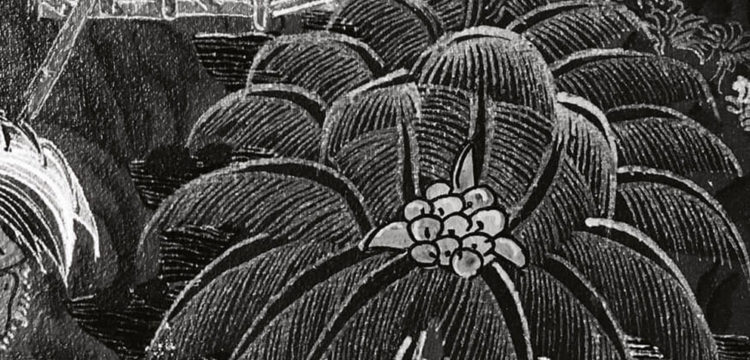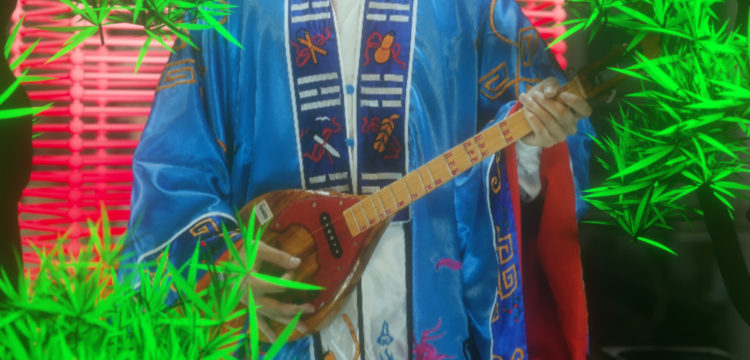The Southeast Asian Multitude
Collectivism, noise and imagination: an interview with Tarawangsawelas
It was November 2011, and it was pretty hot and sweaty on the Ekonomi wagon of the train that was bringing me from Yogyakarta to the eastern end of Java island in Indonesia. The chitchat was surrounded by stretches of bright green rice paddies flowing out of the window. A small Indo-English dictionary enabled my conversation: we only had some basic Nokia mobile phones and no Google translator at the time.
The night before, I had discovered that Arrington de Dionyso was going to play in Bali and I decided it was an unmissable opportunity to observe something that was both unusual and exciting for me: an American musician that represented one of my music cliques of reference—that of Olympia, Washington—was playing on a tropical island I knew very little, but I felt very attached to. I had spent just a couple of weeks there, a few years back, and I was attracted by the idea of finding an access point to scratch away the patina of tourism that made my every interaction so dull.
I was enthusiast and unexperienced. Sharing my headphones with my journey companions and playing Malaikat dan singa—Arrington de Dionyso’s album sung in Indonesian—was a naive and practical way of presenting each other as people with a substantial different background. But music is music. Eka, a nurse with a sarcastic attitude, was mainly feeling the performativity of the music, the theatrical side of it, because the lyrics were speaking to him. Not to me. I didn’t understand a word. And again, there was no Google translator at the time.
After about twenty hours of traveling through the port town of Ketapang, then on a ferry and finally on a bemo, I reached my destination and found out that on stage there was a musician whose acts I would have followed for years, up until now: Wukir Suryadi. He was playing the self-made instrument that goes after his name, the Bambu Wukir. That was my first chance of listening to him playing live. A few years later he would have taken the international stages with Senyawa, his duo with the unfathomable Rully Shabara.
Indonesia is as significant as any other part of the world, but its features make it especially interesting to the contemporary asset of the world because it hosts 250 million people within its political borders and the 87% of them is Muslim, making it the most populous Islamic country in the world. Records should help hitting headlines of the major media outlets, but it’s not the case for Indonesia, which systematically suffers of disdain because of its geographical marginality to the West.
Notwithstanding, its particular history and combination of people and languages led to the elaboration of one of the most useful theories for the interpretation of contemporary nationalisms, elaborated by Benedict Anderson in his fundamental book Imagined Communities (Verso, 2016). Upgrading his theory to the social media-connected community make his findings even more resonating with our effort to decipher society. A nation/community “is imagined because the members of even the smallest nation will never know most of their fellow-members, meet them, or even hear of them, yet in the minds of each lives the image of their communion. Communities are to be distinguished, not by their falsity/genuineness, but by the style in which they are imagined. Finally, the nation is imagined as a community, because, regardless of the actual inequality and exploitation that may prevail in each, the nation is conceived as a deep, horizontal comradeship. Ultimately, it is this fraternity that makes it possible, over the past two centuries for so many millions of people, not so much to kill, as willing to die for such limited imaginings.”
The incredible variety of the Indonesian archipelago was an inspiring field of research for Benedict Anderson to point out worldwide tendencies. At the current political stage, where governments all over the world are refusing to take action against the environmental catastrophe, but are rather designating migrants as the only accountable subjects for the incoming disaster and the future uncertainty, this seminal text provides the tools to interpret both the nationalistic wave which is taking root in Hungary, Italy, Brazil to mention a few glaring cases, as well as the up and coming underground scene, because “communities are to be distinguished by the style in which they are imagined.” CTM festival in Berlin dedicated a section to music from Southeast Asia. Lente festival in Utrecht is hosting musicians coming from Asia since a few years (being one of the very first big events to do so). Who is imagining the underground scene? Is this cultural appropriation? To put it the simplest way: are national identities exploited to market popular music and is popular music representing and reshaping national identities? I believe there is a vast number of active combinations to answer these questions at the moment, and I believe the concept of cultural appropriation, as many ideas that hit the hype, can become abused losing its capacity of developing a critical perspective. It may create an imagined community of fighters that often seem more reactionary than radical.
At its best performativity, music can be as inclusive and absolving as religion. Let’s say that ecstatic states of being are propellers to a collectivist conception of life.
Passports are adamant though, and putting under our screen whatever action is pushing artistic forces together, we have to deal with their power. Underground music and artists coming from formerly colonized nations are legitimately enjoying international funding to access an international and equal platform to show themselves and exchange sounds and visions. What I see today is that music producers from countries that lack of appropriate infrastructures for the arts reach the international stage only when they are able to be on a Western stage, that is a consequential chain falling down from colonial times. And it’s very likely that with time this won’t be a necessary passage anymore.
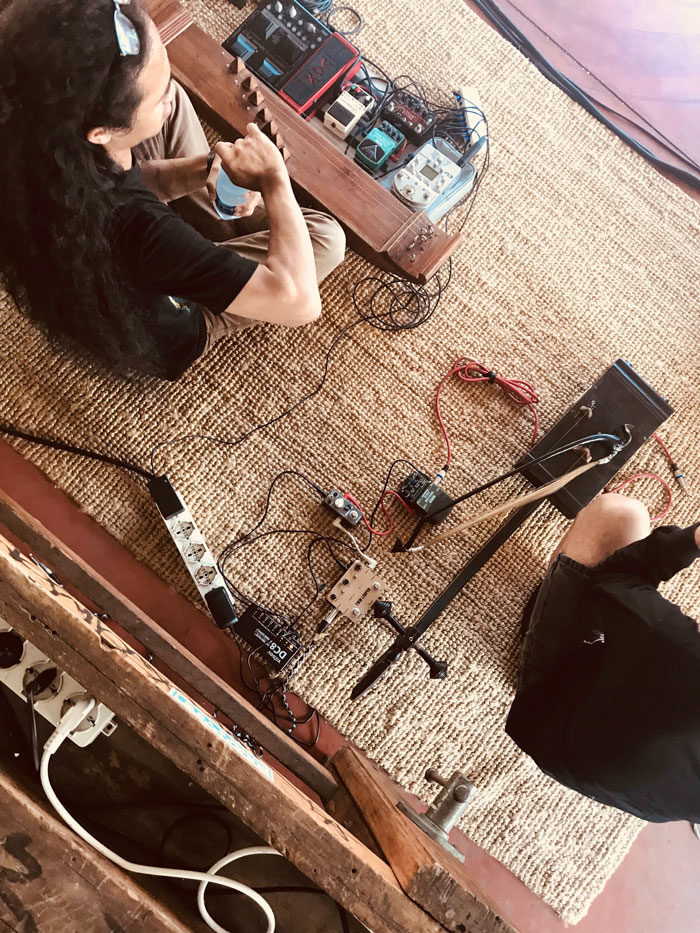
Tarawangsawelas, Photo Ilaria Benini
On a Thursday night eight years after that Indonesian trip, on the last day of January 2019, I had the funny opportunity to enter Berghain at 10pm, without queuing nor mimicking any attitude; I was freely speaking English, freely smiling and freely wearing my light grey scarf with no worries of being bounced back. The CTM had me. Because of my Asia-led research focus, the most attractive acts for me that night were the ones going under the title As If We Could Agree, one in a series of titles using this hypothetical format, a thought provocative communicative expedient that worked as a thread throughout the Festival: As If We Were Seen, As If We Were Free, As If We Were Beautiful, As If We Were Hopeful, As If We Had Power, As If We Could Live On, As If There Were No Ifs, and so on…
In the Säule room, several artists from Southeast Asia—or somehow linked to the geographical area—filled the space with their vibrations, proposing extreme noise performances, of that kind where the speed is so fast you can actually make up the rhythm you prefer. So loud that, during Sodadosa’s harsh noise live, a staff guy moved me away to rush and detect decibels (at a manageable 105 dB). So much fun. The atmosphere was like an actual and living scene, with the audience feeling engaged and artists being supportive of each other.
Curating the line-up, and playing, there was also C-drík, which I like to call the quintessential digger, or “a multifaceted vegan artist and musician” for the official chronicles, who runs the mastering studio/record labels Syrphe, above all dedicated to electronic and experimental music from Africa and Asia. Together with Dimitri della Faille, he is the author of NOT YOUR WORLD MUSIC, Noise in South East Asia, “the first book aiming to chart the spread of noise music across South East Asia” (The Wire Magazine). With politics, gender and global capitalism as keywords, the essays and discographies in the book cover Cambodia, Indonesia, Laos, Malaysia, Myanmar/Burma, The Philippines, Singapore, Thailand, Vietnam.
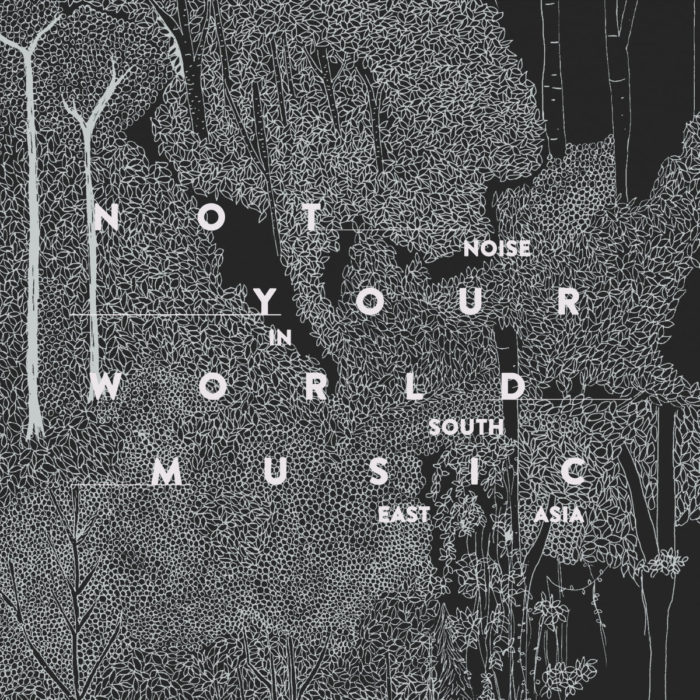
Many of these countries were represented in the Nusasonic project at CTM. There’s a rising interest toward music production from Southeast Asia and Asia in general, as shown by many articles recently published on several media platforms, such as Vice and bandcamp, which is more and more covering the area. Title choices suffer from the flattening and distorting effect of click baiting, with the vexing effect of framing the music in the exotic category (Strange Sounds from Southeast Asia: An Introduction to the Region’s Experimental Labels) minimizing the laudable effort of providing an overview and access point to the sound itself.
Among the artists invited to CTM there was the duo Tarawangsawelas, which I had the chance to interview in Torino in September 2018 when Bunker and Supersento invited them. That’s also when I discovered that the tracklist of their album Wanci—released by Rabih Beahini’s Morphine records, who did a unique work in recent years in disseminating music from Indonesia into the world—makes up the sentence There Is Always Anxiety Even though the Sun Is Still Rising From The East (Selalu Ada Kecemasan Sekalipun Matahari Tetap Terbit Dari Timur). I fell in love immediately.
[Video recording by Paynomindtous | Exploring unsafe sound territories.]
Let’s start from the basics. How did you start playing together?
Teguh: We met each other in 2011 in Bandung and with another friend we started Ensemble Tikoro, a choir with metal vocal and tarawangsawelas base.
We also played in Embrio Projexxx together and we collaborated with Man Jasad, a death metal singer who was among the artists invited to Europalia (in the edition focused on Indonesia) together with Karinding Attack.
During the 2014 political campaign for the presidential elections, people were divided in two groups: Jokowi vs Prabowo (Indonesian Democratic Party of Struggle vs Great Indonesia Movement Party). Man Jasad made a song titled Prabowo, a song that tries to unite them. For the time we recorded it and mixed it the elections were already over, so it was useless (laughing).
OWO OWI
Aku punya dua saudara
Terlahir dari rahim yang sama
Satu Ibu, Ibu Pertiwi
Mengabdi untuk Indonesia Bangkit
Owo Owi Owo Owi
Aku punya dua saudara
Terlahir dari rahim yang sama
Satu Ibu, Ibu Pertiwi
Bekerja untuk Indonesia Hebat
Owo Owi Owo Owi
Saudaraku tengoklah disana, Ibu kita diperkosa
Saudaraku tengoklah disana, Ibu kita dilacurkan
Saudaraku tengoklah disana, saudara kita mandi air mata
Owo Owi Owo Owi
Kepalkan tangan, tak perlu takut
Kita bukan Bangsa pengecut
Kepalkan tangan, tak perlu takut
Kita bukan Bangsa siput
Kepalkan tangan, tak perlu takut
Kita bukan Bangsa badut
Kepalkan tangan, gak usah ribut
Apalagi saling sikut menyikut
Owo Owi Owo Owi,
Kita adalah Sa Udara
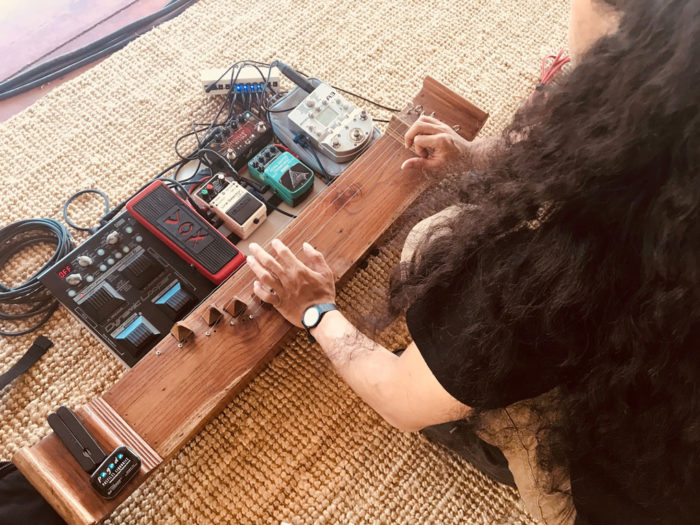
Tarawangsawelas, Photo Ilaria Benini
English:
OWO OWI
I have two brothers
Born from the same womb
One Mother, Mother Earth
Serve for Rising Indonesia
Owo Owi Owo Owi
I have two brothers
Born from the same womb
One Mother, Mother Earth
Work for Great Indonesia
Owo Owi Owo Owi
My brother looked there, our mother was raped
My brother looks there, our mother is prostituted
My brother looks there, our brother takes a tear
Owo Owi Owo Owi
Fist, no need to be afraid
We are not cowards
Fist, no need to be afraid
We are not a snail nation
Fist, no need to be afraid
We are not clowns
Fist, no need to make a fuss
Moreover, they’re elbowing each other
Owo Owi Owo Owi,
We are brothers
What about your name, Tarawangsawelas? We tried to nickname you, but we didn’t know if it made any sense to call you Tarawangsa or Sawelas…
The name Tarawangsawelas comes from Tarawangsa, which is the name of a kind of traditional music and from Sawelas, which means 11, the year we met (2011). 11 is also a symbol for me and him as two people (1 and 1). Our friends thought it was cool. Also, Welas (short-form for welas asih) means love, and we love Tarawangsa.
Is the trance experience important to your music act?
I never got into the trance process, but its true amulets are involved in what we do. But basically trance happens to the dancers, not to the musicians.
There’s a rising interest toward Indonesia, it can be due to the will of the Indonesian government of positioning itself in Europe, and therefore placing funding to reach this goal, or simply to young people’s attitude combined with the Internet. Why do you think the world is finally giving attention to Indonesian artists? Have you noticed any particular change in the Indonesian music scene in in recent times?
Teguh: In recent times there’s more cooperation among musicians, especially in sharing information about funding. When I was attending University, not so many of my peers could speak English and this was a strong limitation. Because of our colonial past, we can apply to several programs to get funding from foreign institutions, like Goethe Institute, which is focusing its support on music, for some reasons. Last year we played a gig in Denmark because the venue got some funding to invite us.
What kind of University did you attend?
Teguh: Institut Seni Budaya Indonesia a.k.a ISBI (Indonesian Institute of Art and Culture) University is mainly devoted to traditional music but many students come in with a previous background in popular music. Some students merge it with a contemporary approach to traditional music, some others with Western music and a third group to a mix of both of them. We come from this approach.
Talking about popular music, I always wondered why metal is so popular in Indonesia. What do you think?
Teguh: He should tell, he’s the metalhead.
Come on, metalhead, tell me why!
Wisnu: It’s related to the underground scene, that was growing fast in the past decades in Bandung, Ujung Berung and Cimahi. The first scene begun from Cimahi but it’s in Ujung Berung that they were always were very active, and the place became famous for that. Well known bands like Burgerkill and Man Jasad came from there, they gave a new spirit to a generation that was trying to fight the establishment. This was happening in the 90s, but the very beginning of that all was with Sucker Head in the 80s. Many of the bands were very influenced by Western metal music. The audience was very bored about the pop culture spread by what was broadcasted on the national television, that was all about sadness and romance. Cinta… (Cinta means love in Indonesian). Metal was more cool, it was mainly a man thing, but nowadays there are many women playing metal. Take Gugat for example, and the vocalist, Ajeng, is Teguh’s girlfriend.
Heavy music was in opposition to television culture, which represented what a certain group of people didn’t like in relation to justice and corruption. The Indonesian government is permeated by corruption. Inequality between rich and poor is very tough in Bandung, and in Jakarta it’s even worst.
The DIY spirit was also an important element, somehow it arrived from Japan, and I remember a gig in 2006 when they stole electricity from the neighborhood. A guy came and simply asked: Why are you disturbing the neighborhood? Everybody stopped playing and applauded because they felt they succeeded: somebody came out. It meant people noticed and reacted.
It’s all about the attitude toward the community, hardcore. There’s a book about it, Pekak by Indra Menus, who was also interviewed in NOT YOUR WORLD MUSIC, Noise in South East Asia.
I don’t listen to Japanese noise that much, but I love the act, they’re extreme and it’s kind of weird the way they play the instruments. They do it upside down and crash it. Take Hanatarashi (ハナタラシ) for example, they crush big constructions. What I like it’s not only the sound but the body performance, it’s not only music.
I’m curious about what kind of music you were listening to when you were a kid.
Teguh: When I was 8 years old it wasn’t possible to listen to much music… But then I moved to another town. In Sukabumi, you were lucky if you could listen to the Beatles, not so many people had access to that sound. Then I started playing guitar. It was about options! I couldn’t really chose to play guitar and pursue any project in rock music… I had to find something similar, and then ISBI University came out as my option. The way we produce music in Tarawangsawelas and other projects is influenced by the fact that I listen to rock and metal. I like old school stuff like Black Sabbath, Nirvana, Soundgarden, and now I find very interesting to listen to Senyawa. During my trip to Denmark, I discovered this band I like, they’re called Get your gun, it’s rock’n’roll but dark. Deep, dark, I’m looking for music with a strong background or a very good sound, I’m not really into lyrics.
How did you exchange music when you were teenagers? Now you’re 26-27, so you started listening to music with the Internet, right?
Teguh: I was recording from the radio with my uncle’s sound recorder, I was also recording farts and replaying them for fun. But we were also downloading, and in my early playlists I had stuff like Peterpan, Naff, Eminem.
Talking about the local network, how does music circulate today in Bandung?
In Bandung, there are many things happening. We have live music almost every two weeks, not only underground. The Internet spread any kind of music and built a crowd, each genre has its own audience. The promoters put stuff on Instagram or Facebook to get an audience.
But I think people into music are more politically aware and this is very important. There’s a band called Efek rumah kaca (House Glass Effect in English). They play an easy listening and acceptable kind of music talking about politics and human rights. Their stuff affected the audience’s perception of the government and justice. Before, political music was just within the underground scene. If the hardcore singers sung about the government, I’m not sure 100% of the people could understand what they were saying because they were screaming (laughing), so they had to actually read the lyrics and to be pretty determined so they could be interested. Pretty difficult.
Twenty years ago, under Soeharto, the dictator, there was censorship and many musicians went to jail, but today I think there’s no censorship on political issues, there’s censorship on bad words. We can criticize the government, but not cursing.
You play traditional music that’s not related at all to the tradition that the Muslim establishment claim to be the tradition Indonesia should follow. How is your everyday life related to this overlapping?
Teguh: We can behave like our own tradition, which is like normal for us, it’s not necessary to make our land Arabic. I think the Internet is playing a role in spreading a more traditional approach to Islam. There are pustaka, fathers, who proselytize through Youtube videos. Many more women wear the veil, but in a way the chador for women isn’t accepted because it comes from the Arabic culture and we don’t think we have to cover all of our body (I notice and find meaningful that the duo speak of a female clothing choice using the “we” pronoun).
What’s the presence and role of collectives in Indonesia?
This is of course quite important. Many major labels put their hands on the bands and influenced them to change their political attitude and activism to make them more commercial. Therefore, collectives giving a space for some indie labels to express and spread their message are very important. Nowadays, thank God, Internet helps the scene to survive even better. It’s easier to get an audience.
A warm thank you to Teguh Permana and Wisnu Ridwana for their time, patience and translations.




